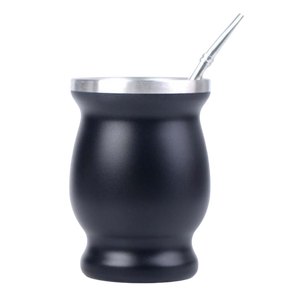
Types of coffee beans and their origin
In this blog we will discuss the different types of coffee beans and the origin of the coffee bean. The coffee bean is the basis of your favorite cup of coffee. But before this bean ends up in your cup of coffee, the bean makes quite a journey. In this blog we go to the source of coffee and take you on the journey of the coffee bean.
The coffee berry
To get straight to the point: the coffee bean is actually not a bean but a seed that grows in the inside of the coffee berry. The coffee berry consists of a thin membrane on the outside, a thin layer of pulp and a large kernel inside; the coffee bean. As the berry ripens during the growing process, it turns from green to yellow to red. Ripe coffee cherries are therefore easy to recognize by their red color. The maturation process of the coffee bean has a major influence on the final taste of coffee. It is therefore important that the coffee cherries are not picked too early, but certainly not too late. The coffee berry is peeled after harvesting and you are left with the pit. This is the coffee bean.
Types of coffee beans
Broadly speaking, there are two types of coffee beans: Arabica and Robusta. Although all types of coffee plants fall under these two names, there are many differences between the coffee plants that affect the final taste of the coffee. The quality of the plants and ultimately the quality of the coffee bean also influence the taste. The type of coffee bean that is used therefore does not say everything about the taste of coffee.
Arabica vs. Robust
Both the Arabica and the Robusta bean each have their own characteristics. For example, the Robusta bean contains twice as much caffeine as the Arabica bean. The Robusta bean is also more bitter in taste and these beans contain less sugar than the Arabica bean. Isn't the Robusta bean the big favorite? No, because tastes differ and in practice both types of beans are mixed to develop different coffee blends.
Origin of the coffee bean
It is not exactly clear where the coffee plant originally comes from. Yet Ethiopia is often mentioned as the country where coffee originated. Today, coffee plantations can be found in more than 50 countries around the world. Due to the differences in climate, height at which the beans are grown and the method of cultivation, there are many differences in quality and taste. Then we haven't even mentioned the way in which the berries are processed and roasted. Although the quality and taste of the coffee bean can differ per plantation, the country of origin is a good indicator that can indicate the taste and quality of the coffee.
Well-known coffee countries
- Colombia (South America): possibly one of the most well-known coffee producers that can grow high-quality coffee due to the favorable location of the country. Characteristic is the wide range of coffee flavors that come from here, ranging from sweet light coffee to more heavier coffees.
- Brazil (South America): the largest coffee producer in the world, with an estimated ⅓ of the total coffee production.( source). Characteristic is the strong and sweet taste of the coffee with nutty flavor variations.
- Ethiopia (East Africa): According to many, Ethiopia is the country where coffee originated. Characteristic is the particularly fruity taste of the coffee.
- Kenya (East Africa): the coffee beans from Kenya are very popular among the European population. Characteristic for the coffee from Kenya is the sweetness and the high quality beans.
Finally…
Hopefully this has given you an idea of the different types of coffee beans and the origin of the coffee bean. Although Arabica and Robusta are the two names for the type of bean, it turns out that the flavors can differ a lot from each other. But if you have to make a choice, the characteristics of Arabica or Robusta and the country of origin are a good indication of the taste of your cup of coffee!
Want to know more about which coffee is used for Cupplement? Check out our coffee page. Or check our blog about how coffee berries are processed into coffee bean: From berry to bean: the transformation of the coffee berry.< /p>
Resources/Literature
Popular products
-
Cupplement Frother

Handy frother for mixing additives to your coffee.
Order now -
Lions Mane

Lions Mane is known to help improve your concentration.*
Order now -
Matcha

Energy
Immunity
Matcha is een fijngemalen groene thee poeder dat traditioneel wordt gebruikt in de Japanse theeceremonie.
Order now -
Pill box

Introducing our sleek and convenient Pill Organizer – the perfect solution to streamline your supplement routine!
Order now -
Mushroom complex capsules

Discover the ultimate support for your overall well-being with our Organic Mushroom Complex in convenient capsules! Now with more active ingredients.
Order now -
Gourd set with bombilla

Handy frother for mixing additives into your coffee.
Order now



















